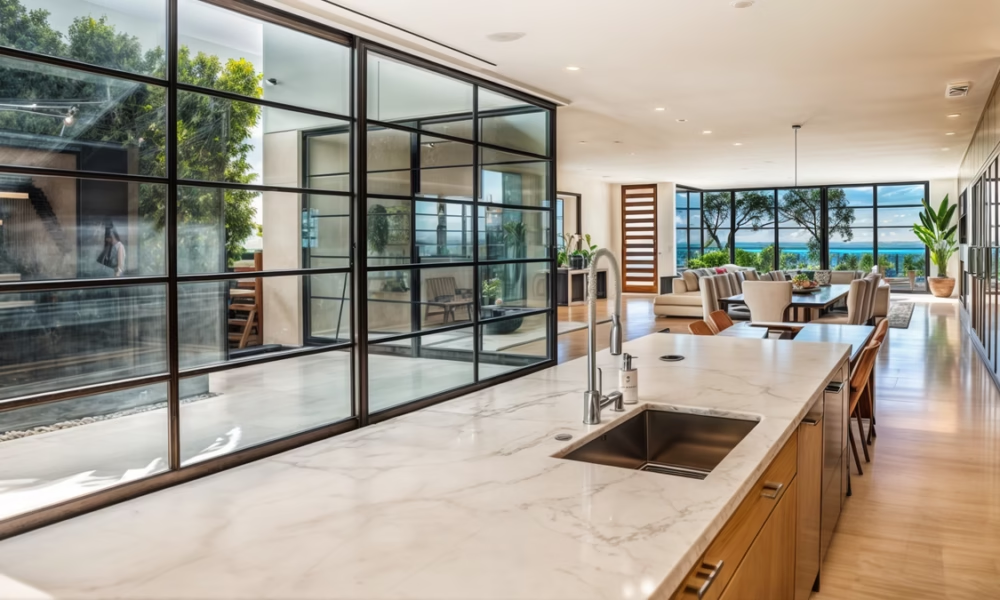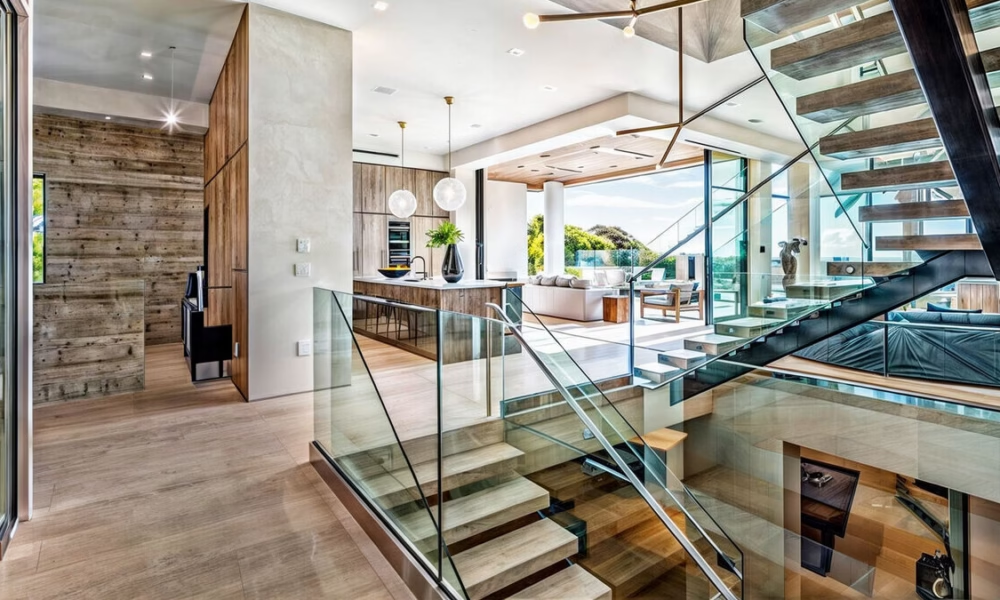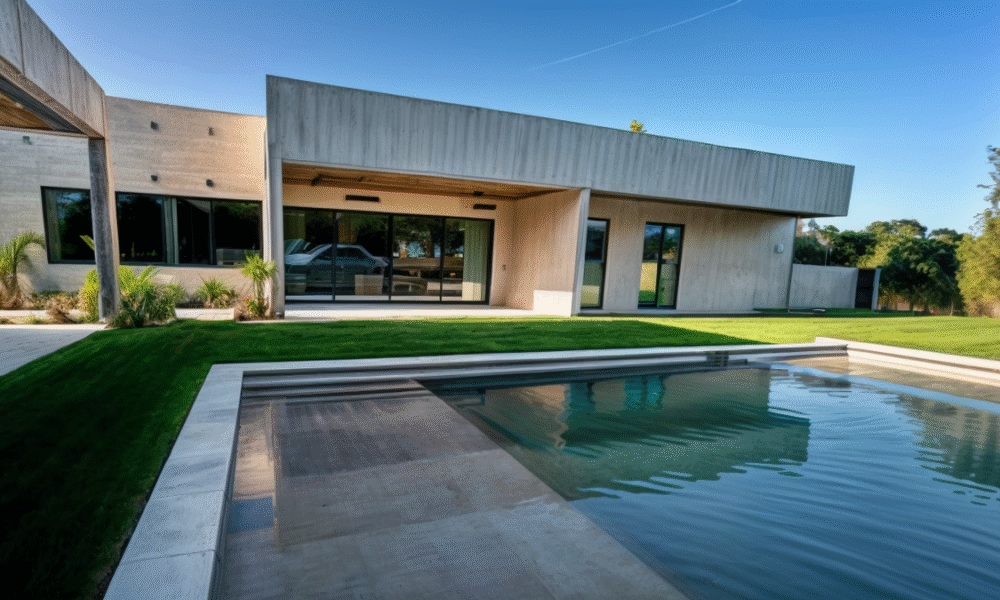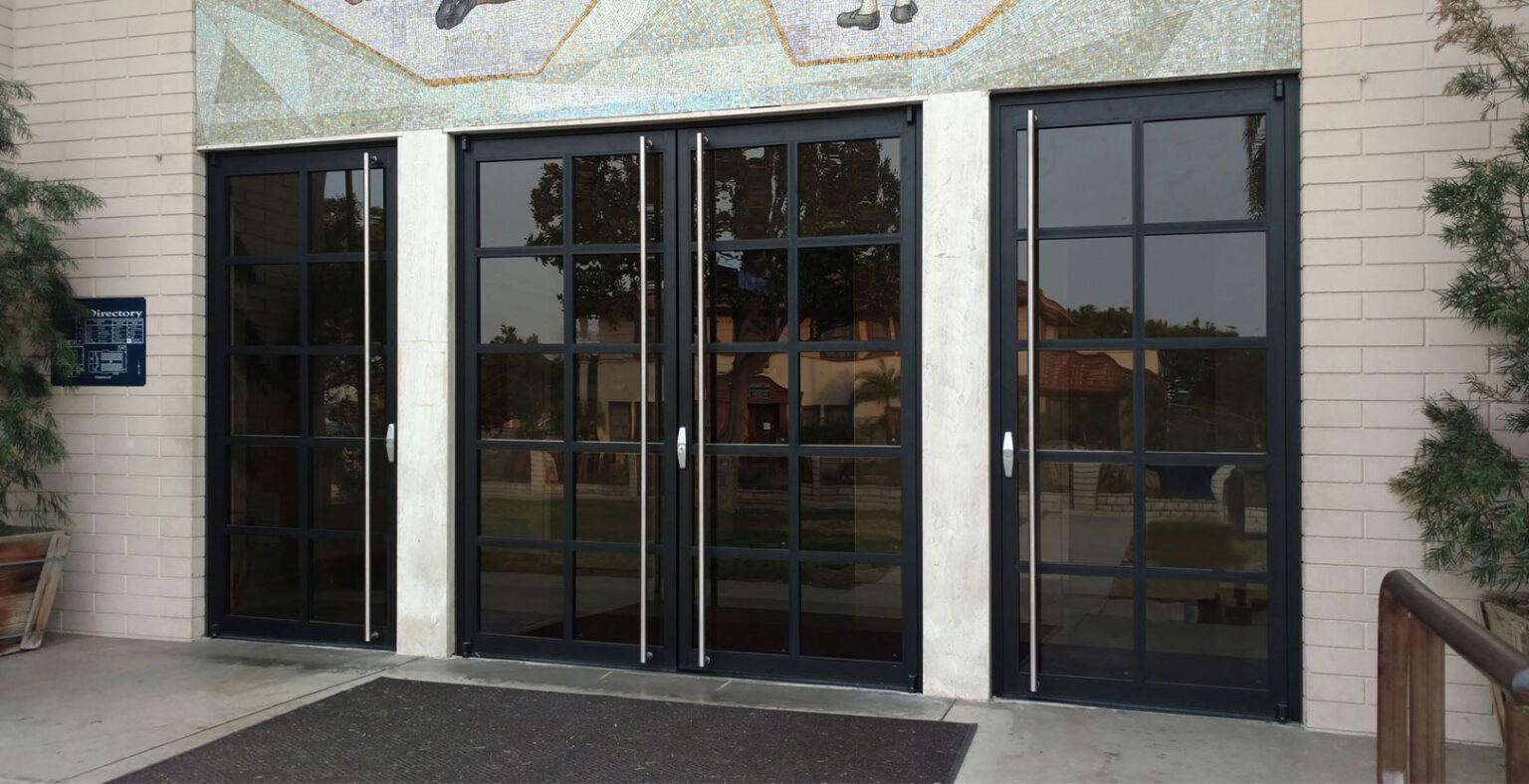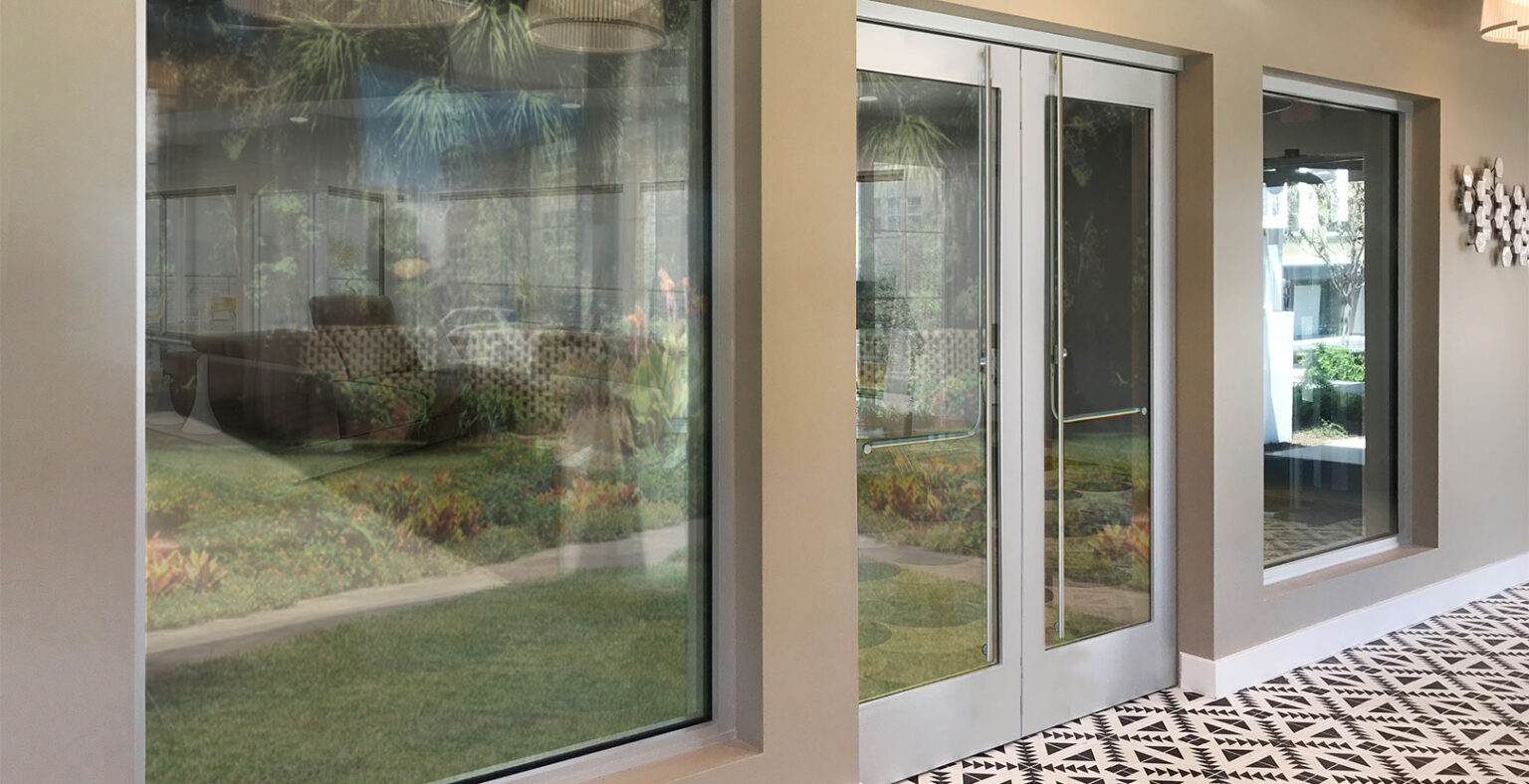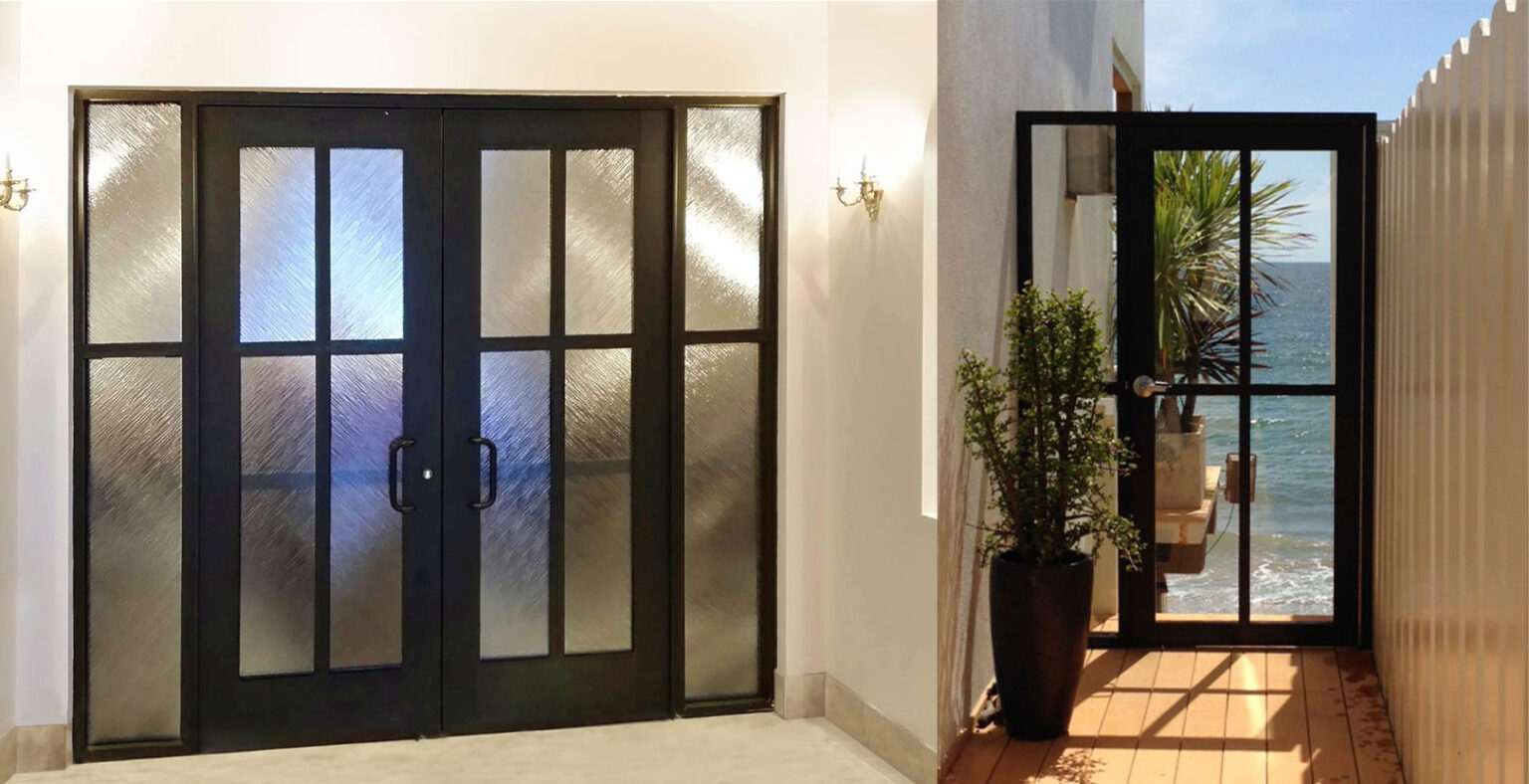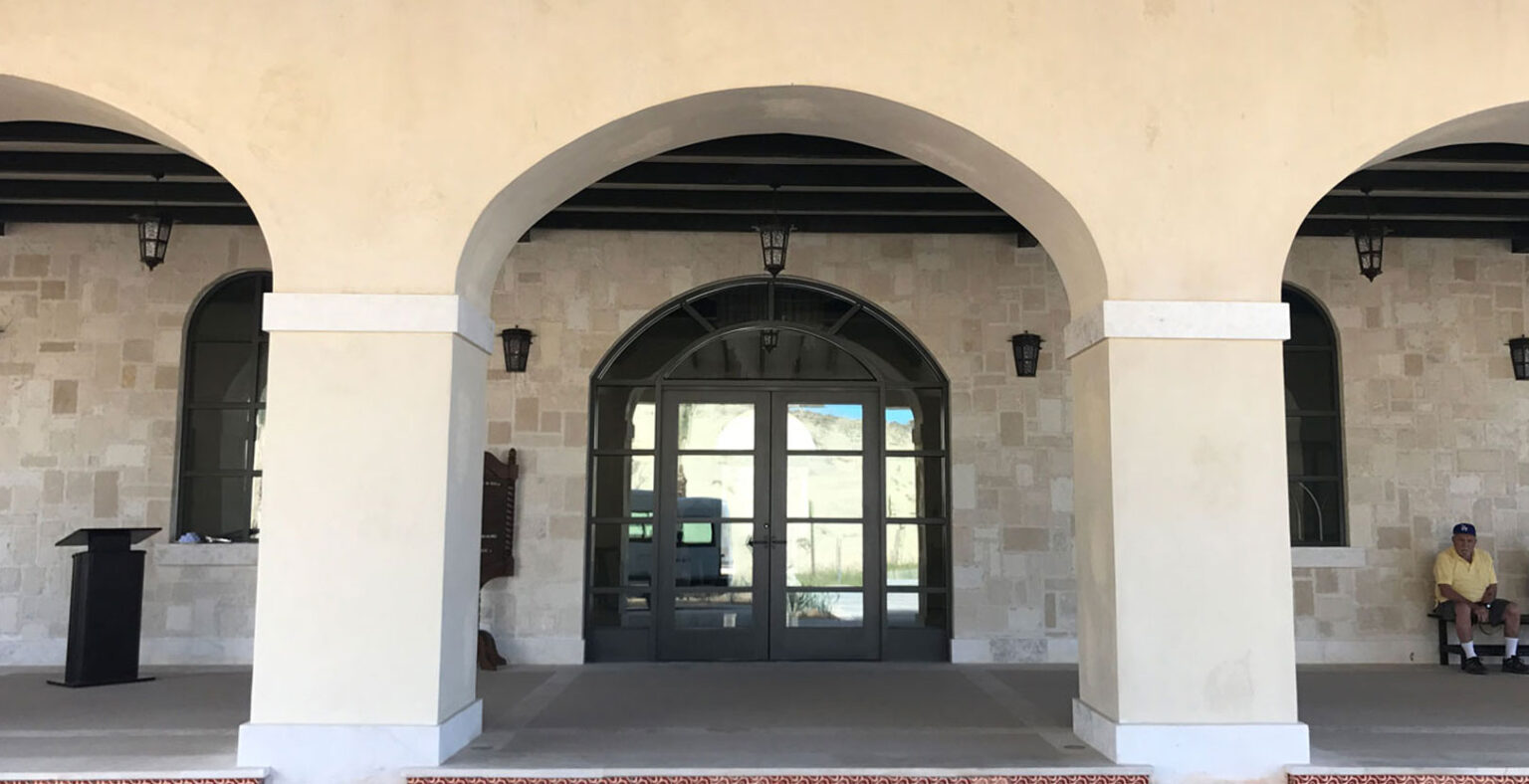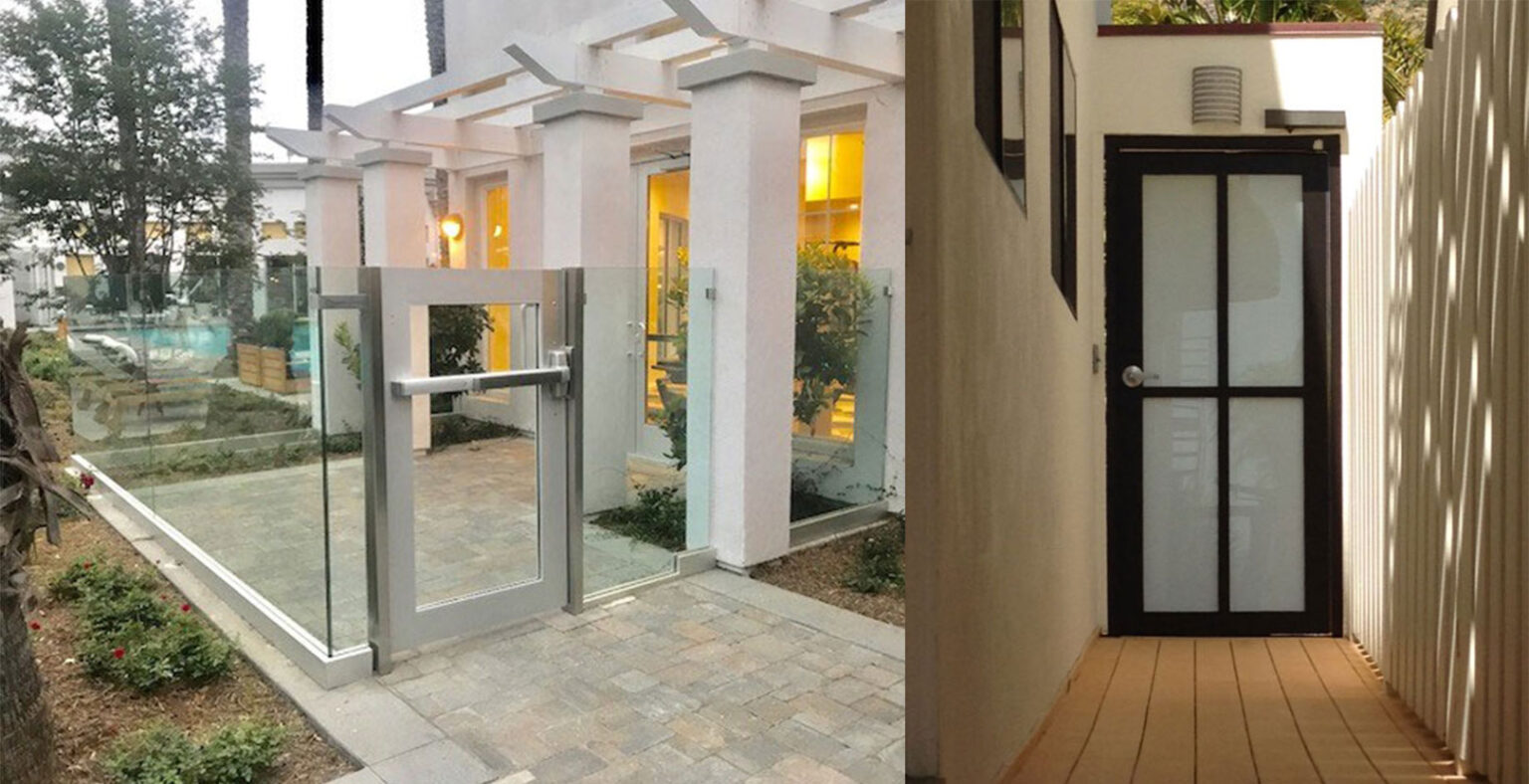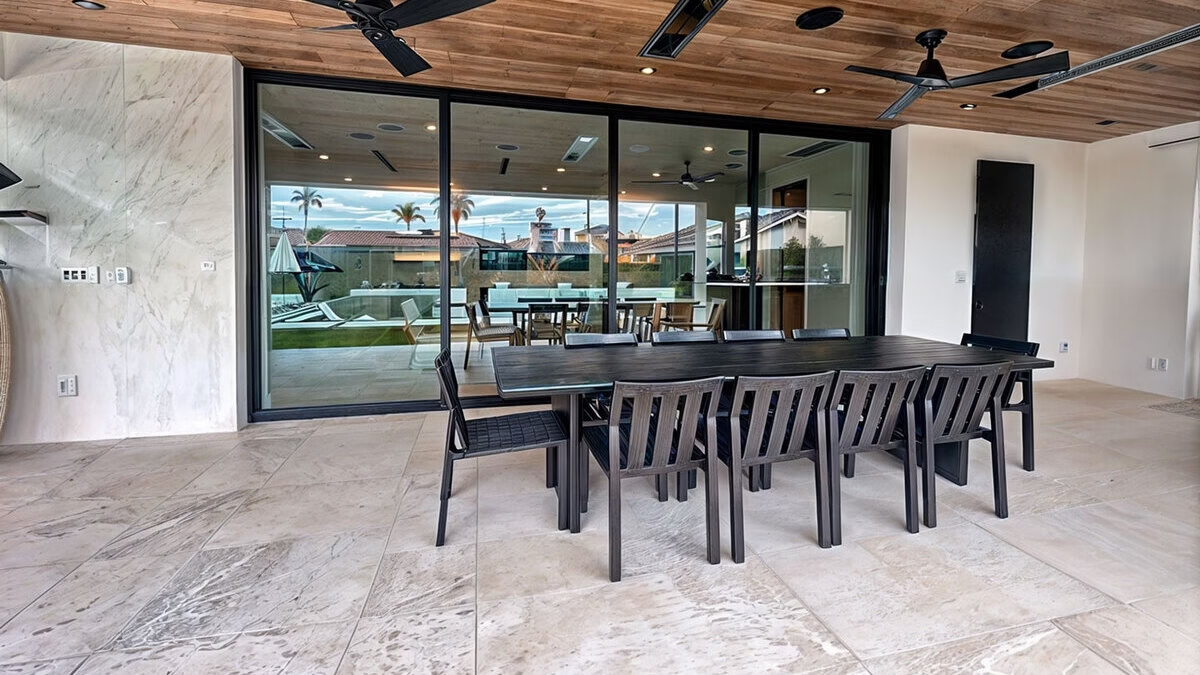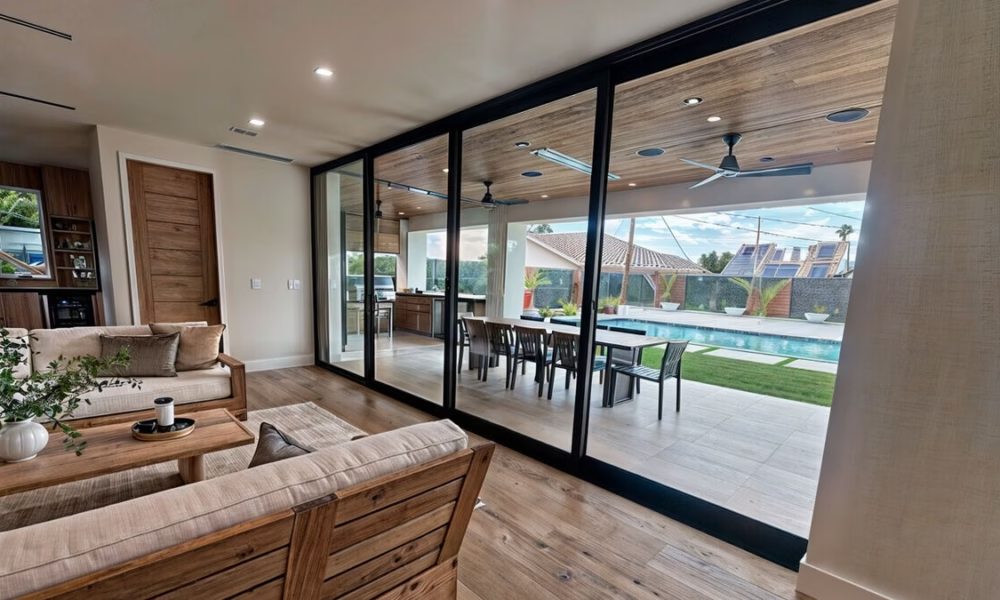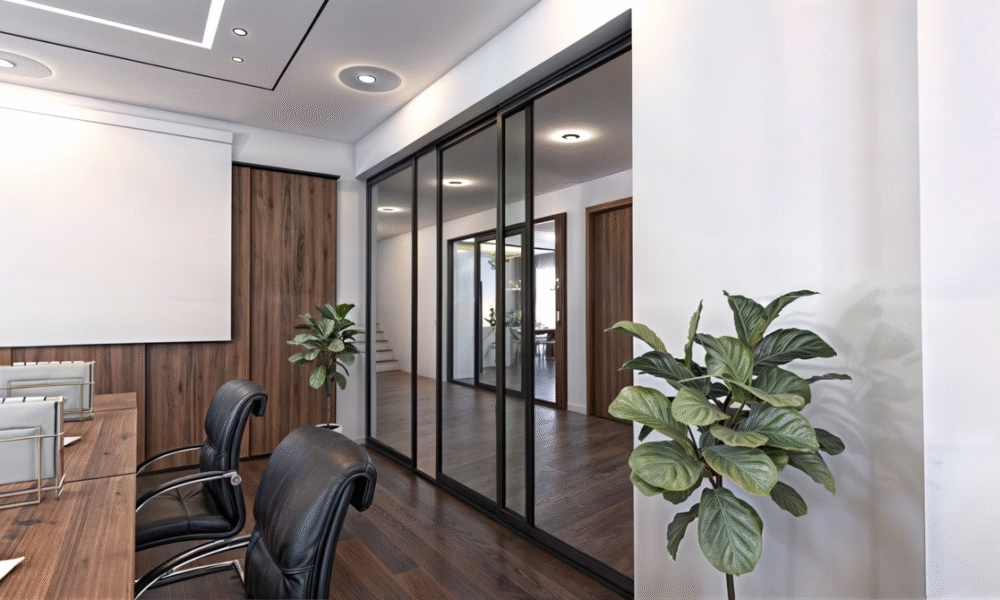How to Clean Glass Shower Doors with Hard Water Stains (and Keep Them from Coming Back)
Hard water stains are one of the most common problems on glass shower doors. They appear as white spots, cloudy areas, or a hazy film, and form when water rich in minerals (calcium, magnesium, and even iron) dries on the glass and leaves behind a hard, sticky layer.
If not removed properly, these stains can become permanent (etching) and damage the glass irreversibly. Below is the most effective professional method to safely remove hard water stains without scratching the glass.
Step 1: Identify the type of hard water stain
Not all water stains are the same:
- White or cloudy = calcium and magnesium
- Yellow or orange = iron
- Rough or crystallized = old, heavy buildup
Step 2: Apply an acidic solution to dissolve the minerals
Minerals cannot be scrubbed away, you must chemically dissolve them.
You can use:
Option A – Warm vinegar (ideal for moderate stains)
- Slightly warm the vinegar (do not boil).
- Mix 1 part vinegar + 1 part water.
- Spray onto the glass.
- Vinegar gradually breaks down mineral buildup.
- Heating it increases its cleaning power.
Option B – Citric acid (stronger and less odor)
- Dissolve 1–2 tablespoons of citric acid in 1 cup of warm water.
- Spray or apply with a sponge.
- More effective than vinegar on calcium and iron.
- Safer for metal hardware when rinsed properly.
Step 3: Let it sit for the right amount of time
This step is VERY IMPORTANT (and the one most people get wrong).
- Light stains: 5–10 minutes
- Moderate stains: 10–15 minutes
- Severe stains: 15–20 minutes (reapply if needed)
Do NOT let the solution dry on the glass. If it starts to dry, spray again to keep the surface wet.
Step 4: Gently scrub with the right tool
Use a non-abrasive sponge or soft glass-safe pad. Scrub in circular or vertical motions, following the direction of the water flow.
❌ Do NOT use hard brushes.
❌ Do NOT scrub dry.
Step 5: Rinse thoroughly
The acid dissolves the minerals, but any residue must be fully rinsed with warm or distilled water to prevent new stains.
Step 6: Dry the glass to prevent new water spots
Cleaning is only complete when the glass is dry, not when it’s wet. Best drying tools:
Drying the glass is what makes the difference between a professional result and an average one.
Important: Protect your shower door
Not all glass is the same. If your door has an easy-clean coating, hydrophobic treatment, or nano-technology, you must:
- Use pH-neutral or coating-safe products
- Avoid vinegar and strong acids directly on the surface
- Follow the manufacturer or installer’s recommendations
💡 At PRL Glass, all our shower doors include a maintenance guide to ensure long-lasting performance and durability.
How to Prevent Hard Water Stains from Coming Back (Professional Prevention)
- Use the squeegee after every shower.
- Dry water-heavy areas with microfiber.
- Leave the door open to ventilate.
- Use liquid body wash instead of bar soap.
- Apply a water-repellent spray (Rain-X or professional treatment) every 3–4 weeks.
- Consider a water softener if stains appear constantly.
Still can’t remove the stains, even with advanced methods?
The glass may already be etched (chemically damaged) by minerals. In that case:
- A more aggressive cleaner will NOT fix it
- Scrubbing harder can make it worse
- The best option is to evaluate the condition of the glass
How to Clean Shower Door Tracks and Hardware (Without Damaging Them)
Even if the glass is spotless, dirty tracks and hardware can make the entire shower look neglected. Over time, they accumulate soap residue, hard water, mold, and even rust, which can affect both appearance and functionality.
Here’s how to clean them properly and keep them in top condition, safely and professionally.
Step 1: Identify the material
Before using any cleaner, check what the track or hardware is made of:
- Anodized aluminum: durable but sensitive to acidic products.
- Stainless steel: stronger, but can still dull with strong vinegar or harsh chemicals.
- Decorative finishes (matte black, brass, gold, bronze): require gentle, non-abrasive care.
- Tip: If unsure, test any cleaner on a small, hidden area first.
Step 2: Basic weekly cleaning (recommended by professionals)
- Mix a few drops of neutral dish soap in warm water.
- Apply with a soft cloth or non-abrasive sponge.
- Wipe in the direction of the metal finish (avoid circular motion on brushed metals).
- Rinse with a damp cloth.
- Dry completely to prevent spots or corrosion.
- This is enough for regular maintenance.
Step 3: Deep cleaning shower door tracks
Tracks often trap soap scum, minerals, dirt, and mold, especially in corners. Professional method:
- Plug the track’s drain holes with paper towel.
- Pour warm white vinegar into the track and let it sit overnight.
- The next day, soak up the vinegar with a towel.
- Scrub with an old toothbrush or soft-bristle brush.
- For stuck-on buildup, carefully use a razor scraper with lubrication.
- Rinse thoroughly.
- Dry completely with microfiber or a hairdryer.
Step 4: Caring for decorative or luxury hardware
- Avoid cleaners with ammonia, bleach, or strong vinegar.
- Use only soft cloths and pH-neutral cleaners.
- For matte black or gold finishes, always dry after cleaning to prevent water spots.
Step 5: Preventive maintenance (the secret to long-lasting hardware)
- Dry tracks and hardware after each shower.
- Use a small brush weekly to remove buildup before it hardens.
- Check screws, seals, and moving parts every 2–3 months.
- Never use kitchen or bathroom “all-purpose” cleaners—many contain acids that damage metal finishes over time.
Professional Maintenance Routine for Glass Shower Doors
Keeping your shower glass clean once is not enough, the real secret is consistent maintenance, just like professionals do. Below is the best cleaning frequency to prevent hard water stains, soap scum, mold, corrosion, and long-term damage.
Frequency | What to do | Why it matters |
After every shower (2 min) | • Use a squeegee
• Dry water-heavy areas with microfiber
• Leave the door open to ventilate | Prevents hard water stains, mold, and bad odors |
Once a week | • Clean glass with mild solution (diluted vinegar or pH-neutral cleaner)
• Wipe with non-abrasive sponge
• Clean tracks and corners
• Rinse and dry | Removes buildup before it hardens |
Once a month (deep clean) | • Use the appropriate method based on stain type (vinegar, citric acid, baking soda)
• Clean hardware, tracks, and silicone seals
• Rinse thoroughly
• Dry completely
• Apply water-repellent spray | Keeps glass clear and reduces mineral adhesion |
Every 3–4 months (preventive maintenance) | • Inspect silicone seals
• Tighten screws / hardware
• Ensure the door slides or opens smoothly
• Reapply hydrophobic or nano coating if applicable | Prevents leaks, corrosion, and structural damage |
Habits That Make a Huge Difference
✅ Use liquid body wash instead of bar soap (bar soap leaves heavy residue).
✅ Don’t leave bottles or sponges in corners (they trap moisture).
✅ If you live in a hard water area, consider a water softener.
✅ Always ventilate after showering (leave the door open or use an exhaust fan).
Your glass still gets dirty quickly? Even with cleaning, buildup may return due to:
- Extremely hard water
- Incompatible cleaning products
- Poor ventilation
- Damage to the glass coating
👉 In this case, a professional evaluation is the best solution. At PRL Glass, we don’t just manufacture high-quality shower doors, we also teach our clients how to maintain them properly so they look like new for years.
What NOT to Do When Cleaning Glass Shower Doors (Mistakes That Can Ruin Them)
Many people damage their shower doors without realizing it, thinking they are cleaning them correctly. Avoiding these mistakes is just as important as using the right method.
Here are the most common cleaning errors that can scratch the glass, damage protective coatings, or harm the hardware.
Mistake #1: Using abrasive products or harsh scrubbers
Steel wool, rough sponges, or abrasive powders can permanently scratch the glass, even if they look “soft.”
Never use:
- Steel wool or metal pads
- Green scouring pads
- Powder cleaners with grit
- Toothpaste (yes, some people try this!)
✅ Tempered shower glass is strong, but not scratch-proof.
Mistake #2: Scrubbing dry or using excessive force
Scrubbing without lubrication (cleaner or water) can:
- Scratch the glass
- Damage easy-clean coatings
- Loosen seals and hardware
✅ Always apply a liquid cleaner before scrubbing.
✅ Effective cleaning is chemical, not physical force.
Mistake #3: Mixing dangerous cleaning products
A VERY common, and VERY dangerous, combination: Vinegar (acid) + Bleach = Toxic gas (chloramine)
Avoid mixing:
- Ammonia + Bleach
- Multi-purpose cleaners + acids
- Unknown products together
✅ If you don’t know what’s in it… don’t mix it.
Mistake #4: Using vinegar or acids on natural stone
Vinegar works on glass, but it destroys marble, granite, and travertine. If your shower has natural stone walls or floors:
- Never apply vinegar, lemon, or citric acid directly.
- Protect the stone before cleaning the glass.
✅ Use pH-neutral cleaners made for stone and glass.
Mistake #5: Using kitchen or bathroom “multi-purpose” cleaners
Many all-purpose cleaners contain:
- Strong acids
- Ammonia
- Hidden abrasives
- Heavy fragrances that leave a greasy film
These can:
- Dull aluminum or stainless steel
- Damage decorative finishes (matte black, gold, bronze)
- Strip protective glass coatings
✅ Always use cleaners made specifically for shower glass or pH-neutral formulas.
Mistake #6: Not rinsing or drying after cleaning
Leaving cleaner on the glass can cause:
- New stains
- Cloudiness
- Sticky residue that attracts more dirt
Cleaning is only complete when you:
- Rinse thoroughly
- Dry completely (microfiber or squeegee)
Mistake #7: Letting buildup sit for weeks or months
The longer minerals stay on the glass, the deeper they bond. Over time, they can etch the surface permanently.
At that point:
- The glass is chemically damaged
- Even deep cleaning won’t fix it
- The panel may need replacement
✅ Prevention is far easier (and cheaper) than restoration.
When to Call a Professional or Replace Your Shower Door
Not every shower door can be restored with cleaning alone. In some cases, the glass or hardware may be damaged, worn out, or beyond repair, and the best solution is to seek professional help.
Here’s how to know when cleaning is no longer enough.
The glass has stains that won’t come off (permanent etching)
If the glass still looks cloudy even after a deep clean, minerals may have etched the surface.
Signs of permanent damage:
- White stains that never disappear
- Rough or textured surface when touched
- Areas that look dull or “burned in”
✅ No cleaner can reverse etching. A professional can evaluate whether the glass can be polished, or if replacement is the better option.
There are visible scratches or swirl marks
Abrasive sponges, steel wool, or incorrect tools can leave fine scratches on the glass.
Look for:
- Scratches visible under light
- Circular haze or swirl marks
- Loss of clarity or shine
✅ A specialist can determine whether the glass can be buffed or if a new panel is safer.
Tracks or hardware are rusty, loose, or not working properly
Hardware affects both appearance and safety. Warning signs:
- Door sticks or doesn’t slide smoothly
- Hinges are loose or squeaky
- Tracks show rust or corrosion
- Moving parts feel unstable
✅ Ignoring this can lead to breakage or accidents. A professional can adjust, replace, or upgrade hardware correctly.
Water is leaking outside the shower
If water escapes through the sides or bottom, it could be caused by:
- Worn or cracked silicone seals
- Misaligned glass
- Damaged hardware
- Poor original installation
✅ A professional can replace seals, realign glass, or recommend a better system.
Your shower door is old or hard to maintain
Older shower doors often:
- Lack easy-clean coating
- Have frames and corners that trap dirt
- Use outdated hardware or tracks
✅ Upgrading to a modern glass shower door with hydrophobic protection can reduce maintenance and extend durability.
You’re remodeling or want a better design
A shower door is a focal point in the bathroom. Updating it to a sleek, frameless or custom design can instantly transform the space.
At PRL Glass, we manufacture custom shower doors with:
- Clear, frosted, or textured glass
- Easy-clean or hydrophobic coatings
- Premium hardware (stainless steel, matte black, gold, bronze)
- Sliding, hinged, or fully custom systems
You want a long-term, low-maintenance solution
Sometimes, cleaning isn’t the problem, the door itself is the problem.
A high-quality professional shower door:
- Requires less cleaning
- Resists hard water and corrosion
- Doesn’t scratch easily
- Has coatings that repel stains
In many cases, replacing saves time, effort, and money in the long run.
Keeping your glass shower doors clear, shiny, and like new is not about luck, it comes down to three key factors:
✅ Using the right method based on the type of buildup
✅ Cleaning at the correct frequency to prevent mineral accumulation
✅ Protecting the glass, tracks, and hardware with smart habits
With this guide, you now know exactly what to do in every situation, from light soap scum to severe hard water deposits, or even permanent glass damage.









